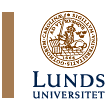

|
Panel No. 28Panel Title: Public Health in South AsiaConvenor: Prof Zulfiqar Bhutta, Dept. of Paediatrics, Agha Khan University, Karachi, Pakistan Thursday 8 July, 13–18 Panel Abstract: Almost fifty six years beyond independence most of the states in South Asia (with the notable exception of Sri Lanka and the Maldives) have some of the lowest health indicators in Asia. A recent review of global under-5 child mortality places the rates in the region among the highest in the world with almost 40% of the total global burden of deaths occurring in four countries of South Asia alone. It is also estimated that almost 70% of the entire global burden of low birth weight occurs in South Asia and enormous inequities exist in the provision of health care and services. These issues of high burden of maternal and child mortality are also associated with the rising burden of diseases of development such as diabetes, cardiovascular diseases and urban obesity. The region has also experienced much tumult and conflict. While countries such as Afghanistan have seen large scale social upheaval and war, other countries have also experienced incessant low-grade conflict for an extended period of time.
Papers accepted for presentation in the panel:Paper Giver 1: Prof. Zulfiqar Bhutta, Department of Paediatrics, The Aga Khan University Hospital, Karachi, Pakistan Paper 1 Title: Maternal and child health in South Asia: a public health and development enigma Paper Abstract: South Asia poses enormous incongruities and challenges to health and development specialists. It possesses a remarkably advanced and qualified work force, leads the world in information technology, is making ground breaking advances in pharmaceutical and biotechnology and also is home to two nuclear states. However, its development indicators and human development indices rank among the lowest in the world and have been fairly resilient to change. Paper Giver 2: Dr. Bo Lindblad, IHCAR, Karolinska Institutet, Stockholm, Sweden Paper Giver 3: Dr. Tej Purewal, University of Manchester, UK Paper 3 Title: Beyond Consensus: NGOs Doing Reproductive Health in Delhi Paper Abstract: In 1994 the International Conference on Population and Development (ICDP) that took place in Cairo was seen as a watershed for population activities internationally. Two of the most significant points emerging out of the ICPD were 1) an emphasis upon NGO involvement in the delivery of reproductive health services and 2) a view of reproductive health as an issue of rights. This was a particularly poignant shift, given India’s history of target-driven population policies. The adaptation to the post-ICPD rhetoric has shown some interesting interpretations of it in India. This paper will draw upon fieldwork done in Delhi with two NGOs delivering reproductive health services to specified communities. In doing so, the paper will analyse some of the contours of the supposed decentralization of reproductive health services and the manner in which the new ‘consensus’ is being embodied or even challenged by local NGO activities ten years on. Paper Giver 4: Dr. Projit Mukharji, SOAS, London, UK Paper 4 Title: Reproductive Health as a Metaphor for Division Paper Abstract: By the middle of the 1830s the triumph of the Anglicists in India House had meant that the hitherto ambivalent attitude of the colonial state towards native medicine was reversed in favour of a more pronounced patronage to Western Allopathic Medicine. Of the eight branches of classical Ayurveda, faculties were founded at the newly formed Calcutta Medical College for six. The only two that were ignored were the ones dealing with venereal diseases and infertility. The incorporation of these into the Medical College as full faculties was not until as late as a hundred years later in the 1930s. Paper Giver 5: Sylvia Sax, Department of Tropical Hygiene and Public Health, University of Hedielberg, Germany Paper 5 Title: Turning Dinosaurs into Strategic actors Paper Abstract: Much has been written about the need to reform bureaucratic Human Resource (HR) practices. Most Health Reform programmes include HR reform as a priority area. But what is really involved in turning around these dinosaurs that sit at the heart of many Ministry’s of Health. The Department of Health and Family Welfare, Government of West Bengal (DHFW, GoWB) has recently developed a Strategic Plan, one of immediate priorities is to restructure their HRD systems. I have been involved in helping them investigate what the immediate and long term steps are to make the dinosaur move. Paper Giver 6: Saswata Ghosh, Council for Social Development (CSD), New Delhi, India, and P.M. Kulkarni, Centre for the Study of Regional Development, Jawaharlal Nehru University, New Delhi, India Paper 6 Title: Do socio-economically backward sections of society lag in epidemiologic transition? An exploratory analysis for India Paper Abstract: India has witnessed a remarkable decline in mortality since 1921 and particularly after independence. This decline is accompanied by an ‘epidemiologic transition’. Research on epidemiologic transition has recognized that the pattern of causes of death has been changing over time and it also varies across populations. Most analyses adopt an ecological approach, of relating the pattern to the national or societal level of mortality and of other characteristics such as income (see the recent work of Salomon and Murray, 2002). A natural question that arises is that does the cause pattern vary by economic classes and also by social groups ‘within a population’? It is conceivable that different socioeconomic classes of a population follow different paths of epidemiologic transition and hence at a time point during the process, are at different phases of transition. This is an issue of relevance in a country like India with a highly stratified society. Using data from the second National Family and Health Survey of India (1998-99), this paper examines whether various socioeconomic characteristics of households influence the pattern of causes of death among various age-sex groups. The results of logistic regressions reveal that social deprivation, standard of living, and education seem to be important determinants of the relative risk of death due to communicable diseases. In other words, socially and economically backward classes lag behind the more advanced sections in the transition process. There is thus a strong case for targeted health interventions. Full paper to be downloaded (as a pdf-file) Paper Giver 7: SECRET Paper Giver 8: Karin Polit, MA, Department of Anthropology, South Asia Institute, University of Heidelberg, Germany Paper 8 Title: Social inequalities in health in Garhwal and its impact on Public health improvement Paper Abstract: Social inequalities in health continue to be a key public health problem. Recent studies in Europe have shown that there are associations between the psycho-social environment and ill health (see e.g. Siegrist & Marmot 2004, Wilkinson 2003). Its has been shown that non-reciprocal social exchanges and low control over ones own life and decisions made in the family can contribute to ill health (Wilkinson 2001, 2003). All this seems to hold true for rural South Asia as well. The people most marginal in Garhwal, Uttaranchal are low caste rural women. I argue that women’s health and their access to medical care is influenced not only by the marginality resulting from their low caste and class status, but also their relative status within their families and villages. In this paper, I will explore the dynamics in a current Public health effort of a local NGO which focus on the education and empowerment of women, hoping to improve the overall health status in local villages. Basing my analysis on ethnographic field data and on theories of social inequality, I will explore the tools used to implement the program and evaluate their chances for success. Closing Remarks by Dr Bo Lindblad, 17.30–18.00
SASNET - Swedish South Asian Studies Network/Lund University
|

